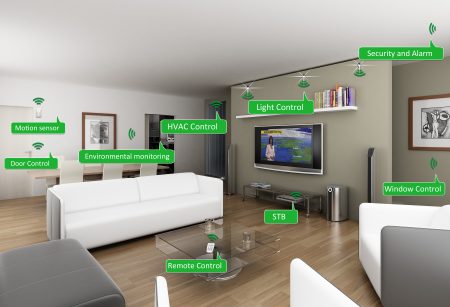February 19, 2018 – Today’s guest blogger is Sophia Garcia, a first-time contributor to 21stcentech.com. Garcia has worked in telecommunications in 3 countries for 4 different telcos. Her current work is with a start-up company focusing on the delivery of educational testing through mobile devices. Garcia has unique insights about the current state of mobile telecommunications. In this posting, she describes how small pieces of software code called bots, when combined with connected devices can lead to unintended consequences.
What’s a Bot? What’s a Botnet?
It’s a simple software program, a small amount of computer code which can be executed (run) almost anywhere. A collection of these simple programs running in many places is called a botnet. Botnets can run concurrently using a network of Internet-connected home devices. There has been a proliferation of these Internet-connected home products over the last 2 years. It seems today that anything can be put online. Connected devices include refrigerators, kettles, smartwatches, and wearables. You could even have a botnet running on your cell phone right now.
Home-connected devices and Botnets
Botnets may contain malicious software which the industry calls malware. A botnet can be installed on any Internet-connected device you own without your knowledge and can act out commands from someone located anywhere in the world.
When this sort of activity is coordinated, an army of bots can unite to target a single website, all of them querying the site over and over again, in what is referred to as a DDOS attack, Distributed Denial Of Service. A single bot may not seem very threatening but imagine a million of them questioning the same website at the same time. Use of botnets can bring down even the best-defended government website causing it to crash.
Botnets can simply be a trick. Or they can be an act of terror. They are hard to detect, harder to stop and, with the proliferation of internet-enabled products exploding in all of our homes, they could be turning our innocuous Internet-connected devices into hired guns to hack websites. Today the average home contains 13 connected devices. Soon, that will rise to 20. And botnets could be installing themselves on your devices right now.
Components of the Botnet
- Zombies: a piece of Internet-connected hardware capable of being hijacked to run a bot. The name zombie imparts the way the software works. Bots take over their hosts. Your simple Internet-connected umbrella may still keep the rain off, but if it’s taken over, when instructed, will do the bidding of a clever hacker who wrote the code.
- Thrall: When there are thousands of bots acting as a botnet, their collective action is called a thrall.
- Hacker: The individual behind the malware, hackers are often hired on the dark web specifically for the purpose of bringing down a prominent website by using a botnet. Costs for such services can range from a few thousand to tens of thousands of dollars. (Not recommended unless you would like the federal security agents showing up at your door in the middle of the night.)
As the Internet of Things Hits Homes
Botnets have been around since the turn of the 21st century. Hackers who write this type of software are now able to take advantage of the growth of connected devices in the home. This is a new frontier for them. And if you attended this year’s Consumer Electronics Show in Las Vegas, it is a hacker’s paradise filled with devices ripe for botnets. From shoes to sheds, digital connectivity is being built into all kinds of consumer products. That means onboard software defenses for these products are likely targets for botnet placement. Security is basic in most of these products. It doesn’t take much for a hacker to find the weaknesses.
What Botnets Can Do To You
- Run up huge mobile data bills: If your hardware is infected with malware and has a SIM installed, think cellphone, then you could be in for a big bill on your monthly statement. Hackers don’t care what a service provider charges you with each DDOS attack setting you back hundreds of dollars before the service provider or you become aware.
- Slow your home internet: The more internet-connected products you have in your home, the more likely they can be taken over. And once infected, your home devices in a DDOS attack may distribute so many parallel calls that your Internet speeds slow to a crawl.
Summing up the Potential Impact of Botnets
Botnets are simple in theory but complex systems to roll out in the real world. For security authorities like governments and antivirus companies, it can be difficult to anticipate how things will work when there are 20 billion Internet-connected devices in the world. As the numbers increase exponentially, so will the number of zombies, and botnets, with more of us caught up in these attacks, whether knowingly or not.

















